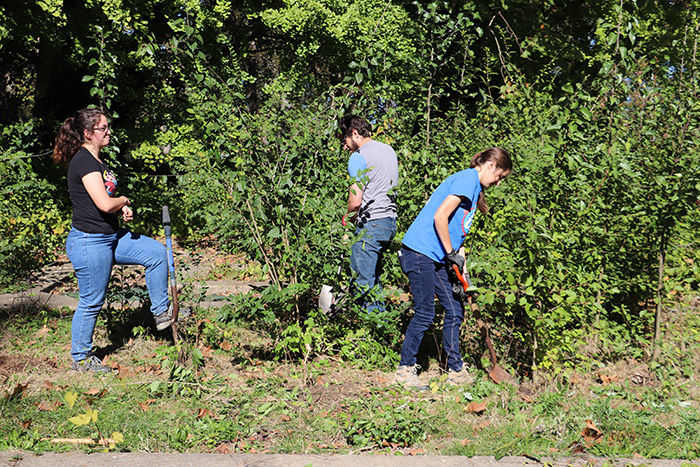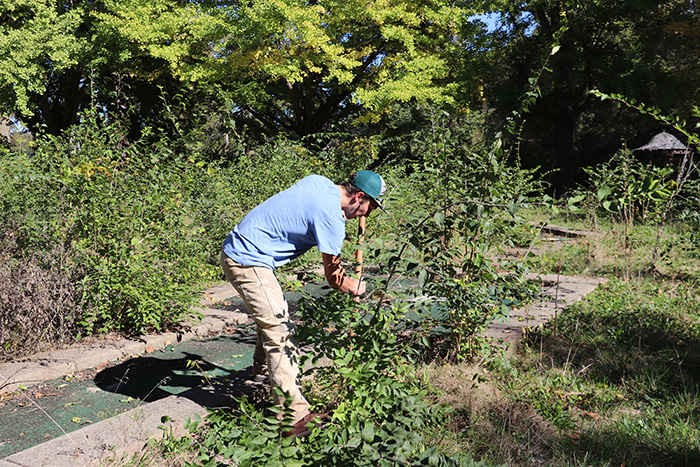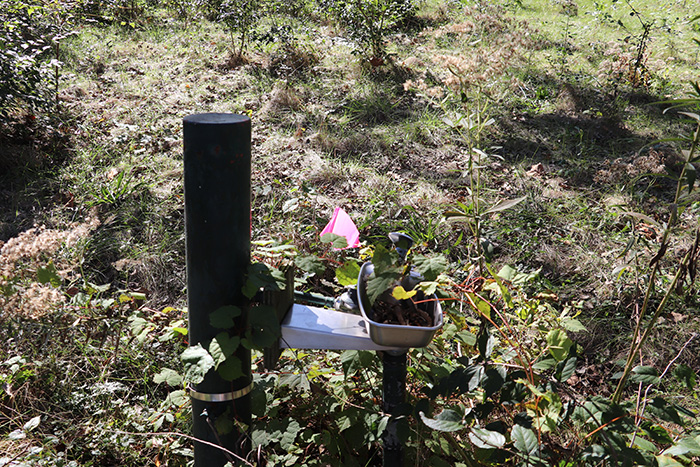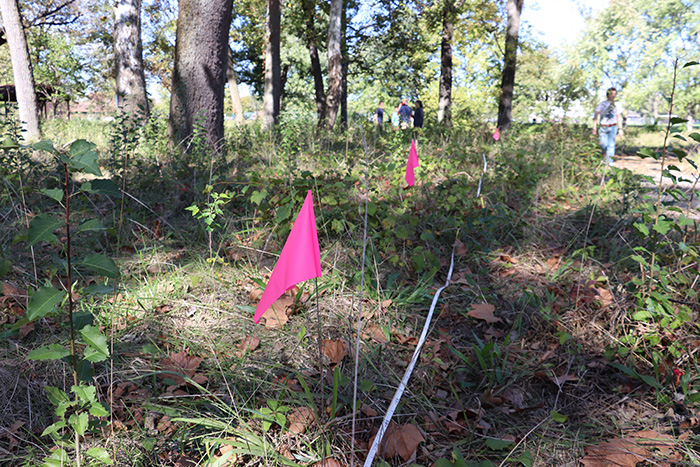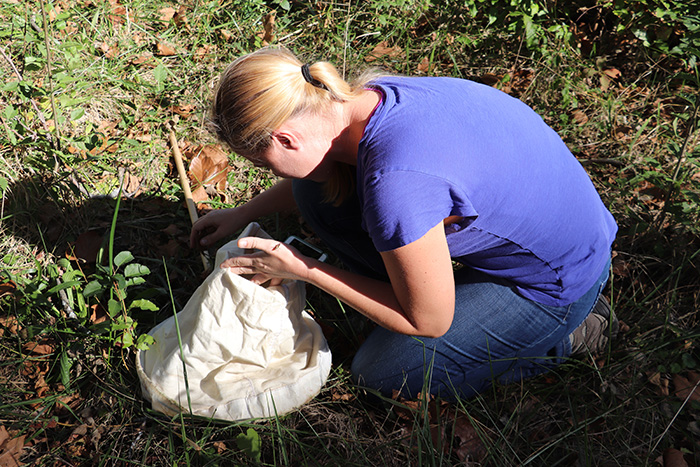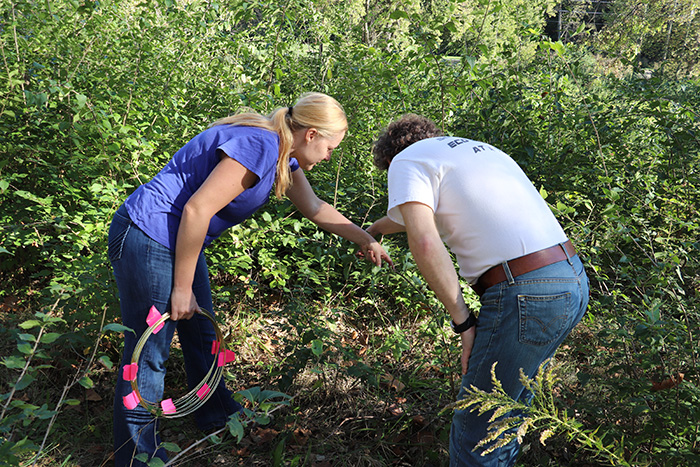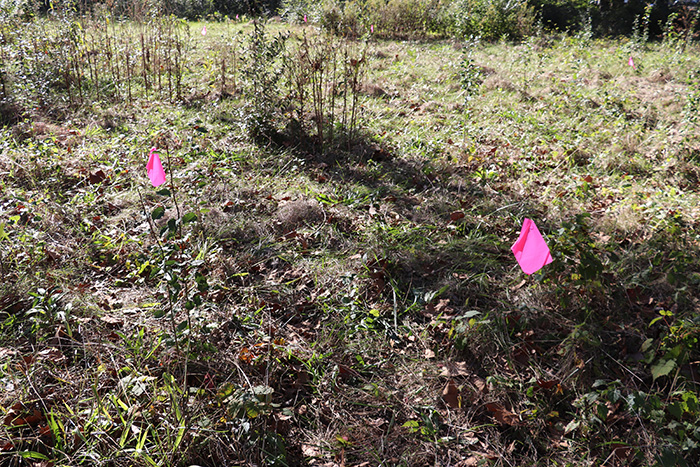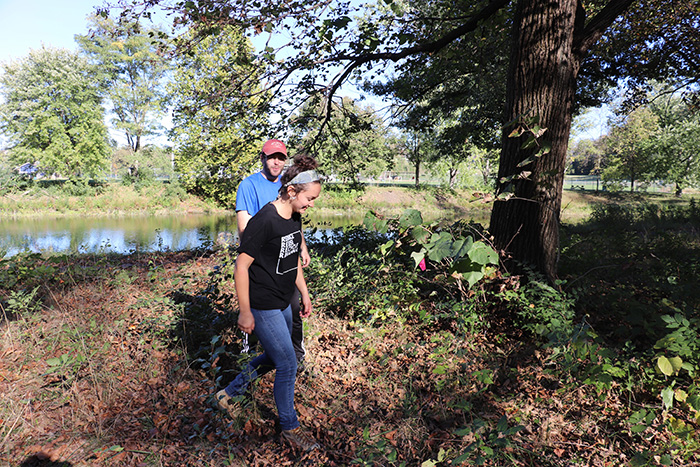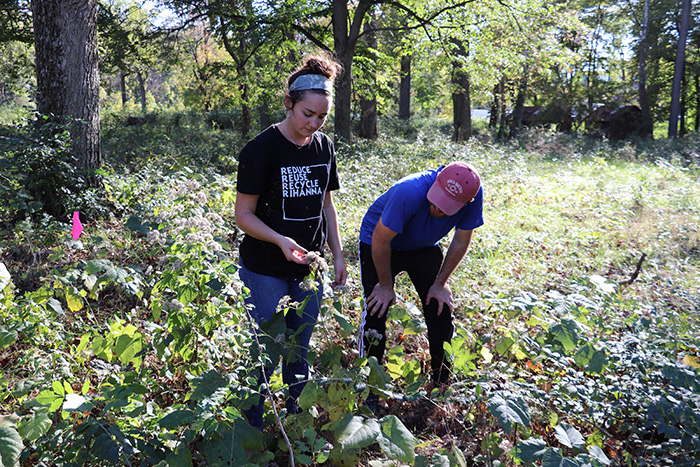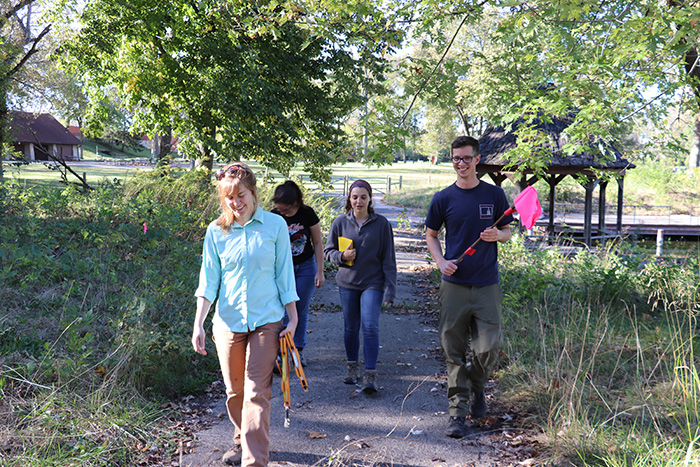College of Arts and Sciences Newsroom
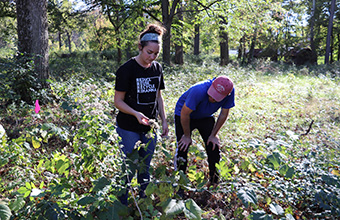
New Life for Old River Park
Dayton's Old River Park served for more than a half-century as a recreational area for NCR employees and their families, leaving generations of local residents with warm memories of picnics, band concerts and canoe trips on its scenic lagoon.
Starting this fall, University of Dayton department of biology faculty and students began using a portion of the 45-acre park for environmental research and education.
The University’s Environmental Research Area at Old River Park allows undergraduate and graduate students to put their classroom skills into practice in a natural setting at River Campus on South Patterson Boulevard. The park also gives environmental and ecological science faculty a place to establish research plots or experiments that need to be done outdoors.
“Right now at UD this is the only opportunity that students have to experience nature in somewhat of a wild setting,” said Ryan McEwan, associate professor of biology and environmental biology program coordinator. “There are aquatic, grassy and forest habitats all within an easy walk from the traditional campus.”
Opened in 1939, Old River Park was the vision of Col. Edward Deeds, then president and board chairman of NCR. He hired the Olmsted brothers, the famous landscape architects who designed New York City’s Central Park, to create its system of lagoons, nature trails and playground areas.
The park closed in 1998, but opened weekends in the summer of 2009 under the management of Dayton History. The University assumed ownership in December 2009 when it purchased NCR’s former world headquarters and 115 acres of land.
The University maintains about 5 acres of the park, including the canoe livery and picnic area, for use by Campus Recreation and the River Stewards program. The 2-acre environmental research area covers the former miniature golf course and oversized checker boards, now overrun by trees, shrubs and grasses.
“The ecological processes have started to transform it back into a more natural state,” McEwan said. “That makes it really interesting for students to spend time out here.”
On a recent afternoon, students from McEwan’s undergraduate Environmental Instrumentation Laboratory and graduate Research Methods in Ecology courses were working to clear invasive plant species such as honeysuckle, and to establish research plots to measure the area’s plant and animal life.
“We are looking to see what other native plant species can make their way in after removing the invasive species,” said Corey Kuminecz, a senior environmental biology major from South Bend, Indiana.
Meg Maloney, a senior environmental biology major from Glen Ellyn, Illinois, plans to set down “cover boards” to attract snakes so she can identify the native species and educate other students about their importance to the ecosystem.
“It is very unique for the University of Dayton that we have this area that students can go out to, use the skills that they have gained through their undergraduate career and actually apply them in an environmental setting,” she said.
Similarly, doctoral student Ryan Reihart '14 will identify ant species in the area to support his doctoral research on invasive ants and help give him a better understanding of ants in general.
University Director of Experiential Learning Karen Velasquez said the site is an important resource for students.
“The students here doing projects through Dr. McEwan’s class are really gaining valuable hands-on experience,” Velasquez said. “They are working on projects that will benefit them in their learning and their professional development as they move on to careers in the sciences.”
Currently, faculty and students can only visit the research area when accompanied by McEwan, who worked with Facilities Management, the Department of Public Safety and the Office of Legal Affairs to address safety concerns and gain the necessary permissions to access the site. He plans to build a team and train faculty and students to use the area without his supervision.
“It’s an environmental research area, but that doesn’t just mean environmental biology,” McEwan said. “Right now we’re measuring the biology of the system, but the idea for the future is for it to be a collaborative space that lots of people can use. … It is an opportunity that we’re going to be pushing forward.”
- Dave Larsen, communication coordinator, College of Arts and Sciences

